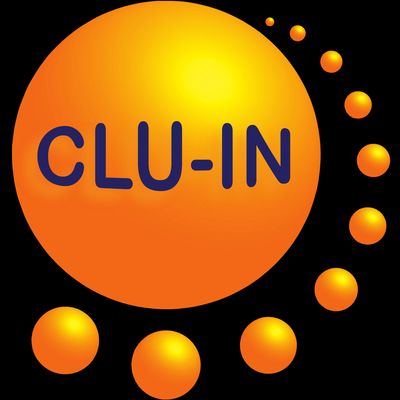Since 1998, The Contaminated Site Clean-Up Information (CLU-IN) website has presented Internet Seminars covering a wide variety of technical topics related to hazardous waste characterization, monitoring, and remediation. For select seminar topics offered since 2012, we are making complete video recordings available through our archives. This feed contains all video seminars archived in the last 12 months. For a complete list of seminars archived since 2000, please visit http://www.clu-in.org/live/archive/. Our Rehabilitation Act Notice for reasonable accommodation is available at http://www.clu-in.org/training/accommodation.cfm. CLU-IN was developed by the U.S. Environmental Protection Agency (EPA) but is intended as a forum for all waste remediation stakeholders. For more information and to view upcoming live offerings, please visit http://www.clu-in.org/live/. For a complete list of RSS feeds available on CLU-IN, please visit http://www.clu-in.org/rss/about/.
http://www.clu-in.org/live/archive
Biogeochemical Interactions Affecting Bioavailability for in Situ Remediation: Session II - Bioavailability of Mixtures of PAHs, Chlorinated Compounds, and Metals (May 13, 2019)
This webinar series will feature individual research projects funded by the NIEHS Superfund Research Program (SRP). In 2013, the SRP initiated a targeted research program to better understand how contaminants in the environment are affected by complex biological, geological, and chemical processes. By understanding these complex interactions, we are better equipped to optimize remediation strategies and, therefore, improve science-based decision making for site management, priority-setting, and remedy selection. The individual research project grants support problem-solving research on the mechanisms of biogeochemical interactions that may impact remediation of contaminated soil, sediment, surface water, or groundwater. In session 2, we will hear from SRP-funded individual research projects at Virginia Institute of Marine Science, University of California, Riverside, and Colorado School of Mines. Researchers led by Michael Unger, Ph.D., and Aaron Beck, Ph.D., at the Virginia Institute of Marine Science (VIMS) are developing new analytical techniques to help evaluate and quantify the mechanisms controlling the transport and the bioavailability of polycyclic aromatic hydrocarbons (PAH) at contaminated sediment sites. They have employed an antibody-based biosensor developed at VIMS that allowed rapid evaluation of the mechanisms controlling PAH transport at contaminated sediment sites saving effort and costs over traditional GC-MS based methods. Biosensor measured PAH in porewater was highly correlated to GC-MS analysis in split samples and was also correlated to benthic amphipod toxicity in laboratory tests. PAH concentrations in porewater samples were better predictors of toxicity than whole sediment PAH concentrations currently used for regulatory evaluation of remediation effectiveness. Future remediation plans at contaminated sediment sites that involve sediment removal and/or capping will need to address controlling the PAH flux to the aqueous phase. These new technologies allow this assessment to be accomplished more rapidly and economically than traditional methods. The technology has also been adapted for the rapid quantification of PAH concentrations in oysters and soils and is being developed as a potential tool for quick response during flood or oil spill events. For more information, please visit: Impact of Groundwater-Surface Water Dynamics on in situ Remediation Efficacy and Bioavailability of NAPL Contaminants Jay Gan, Ph.D., and Daniel Schlenk, Ph.D., lead a project at the University of California, Riverside to develop a simple method for measuring and accounting for contaminant aging in risk assessments and remediation. They will apply the method to sediment samples collected from various depths (reflecting deposition at different historical times) and location (reflecting different sediment properties) at the Palos Verdes Shelf Superfund site off the Los Angeles coast. Sediments at this site contain high levels (up to 200 mg/kg) of DDTs and PCBs deposited from as far back as 60 years ago. For more information, please visit: Exploring the Importance of Aging in Contaminant Bioavailability and Remediation Researchers led by James Ranville, Ph.D., at the Colorado School of Mines are developing and refining techniques - including environmental molecular diagnostics and stable isotope assays - used to detect, assess, and evaluate the bioavailability of metals that occur in mixtures and can be taken up by aquatic organisms, including nickel, zinc, copper and cadmium. They have tested these approaches in a metals-contaminated stream at the North Fork Clear Creek Superfund site in central Colorado. Stream remediation began in 2017 by lime-treatment of the major mining inputs. This project will improve knowledge on the risks posed by mixtures of contaminant metals and assist in evaluating remediation effectiveness. For more information, please visit: Investigating Biogeochemical Controls on Metal Mixture Toxicity Using Stable Isotopes and Gene Expressions To view this archive online or download the slides associated with this seminar, please visit http://www.clu-in.org/conf/tio/SRPPIR10_051319/
